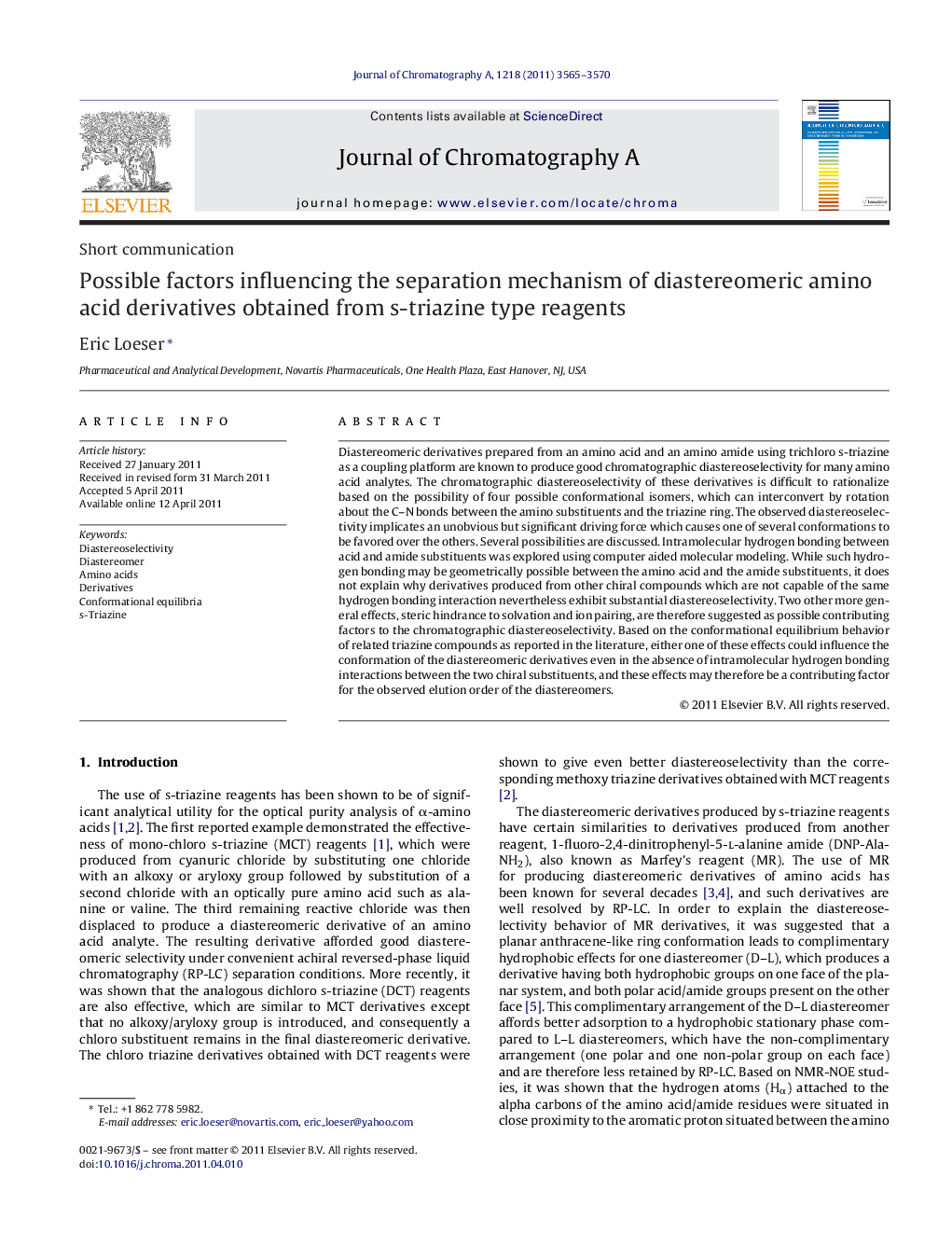| کد مقاله | کد نشریه | سال انتشار | مقاله انگلیسی | نسخه تمام متن |
|---|---|---|---|---|
| 1204277 | 965147 | 2011 | 6 صفحه PDF | دانلود رایگان |
عنوان انگلیسی مقاله ISI
Possible factors influencing the separation mechanism of diastereomeric amino acid derivatives obtained from s-triazine type reagents
دانلود مقاله + سفارش ترجمه
دانلود مقاله ISI انگلیسی
رایگان برای ایرانیان
کلمات کلیدی
موضوعات مرتبط
مهندسی و علوم پایه
شیمی
شیمی آنالیزی یا شیمی تجزیه
پیش نمایش صفحه اول مقاله

چکیده انگلیسی
Diastereomeric derivatives prepared from an amino acid and an amino amide using trichloro s-triazine as a coupling platform are known to produce good chromatographic diastereoselectivity for many amino acid analytes. The chromatographic diastereoselectivity of these derivatives is difficult to rationalize based on the possibility of four possible conformational isomers, which can interconvert by rotation about the C-N bonds between the amino substituents and the triazine ring. The observed diastereoselectivity implicates an unobvious but significant driving force which causes one of several conformations to be favored over the others. Several possibilities are discussed. Intramolecular hydrogen bonding between acid and amide substituents was explored using computer aided molecular modeling. While such hydrogen bonding may be geometrically possible between the amino acid and the amide substituents, it does not explain why derivatives produced from other chiral compounds which are not capable of the same hydrogen bonding interaction nevertheless exhibit substantial diastereoselectivity. Two other more general effects, steric hindrance to solvation and ion pairing, are therefore suggested as possible contributing factors to the chromatographic diastereoselectivity. Based on the conformational equilibrium behavior of related triazine compounds as reported in the literature, either one of these effects could influence the conformation of the diastereomeric derivatives even in the absence of intramolecular hydrogen bonding interactions between the two chiral substituents, and these effects may therefore be a contributing factor for the observed elution order of the diastereomers.
ناشر
Database: Elsevier - ScienceDirect (ساینس دایرکت)
Journal: Journal of Chromatography A - Volume 1218, Issue 22, 3 June 2011, Pages 3565-3570
Journal: Journal of Chromatography A - Volume 1218, Issue 22, 3 June 2011, Pages 3565-3570
نویسندگان
Eric Loeser,